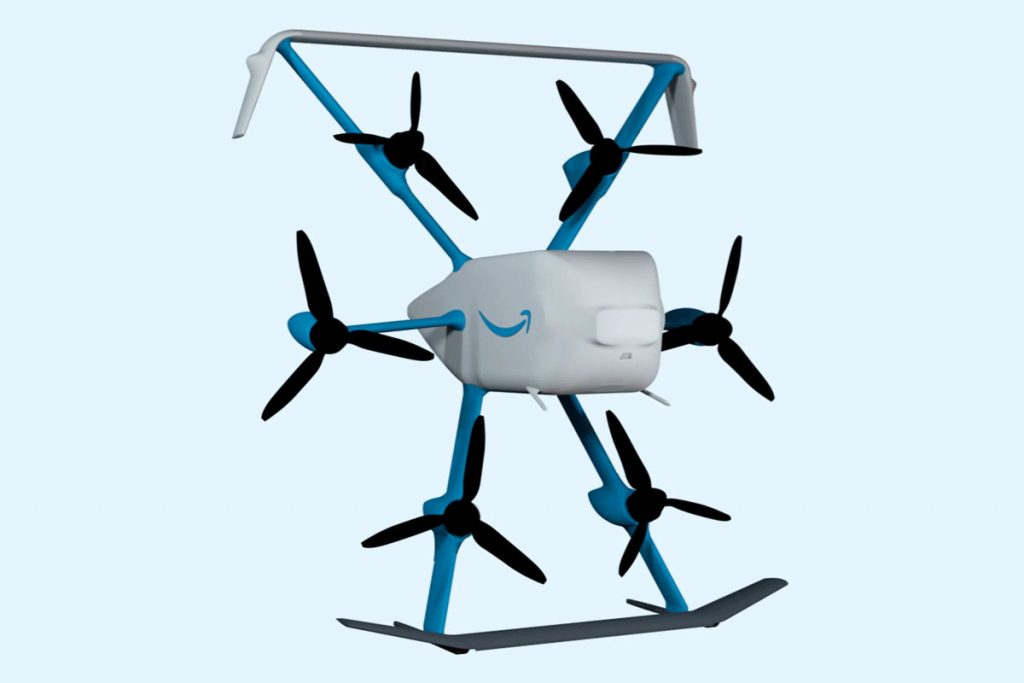Amazon Starts Drone Deliveries – But Still Long Way To Go Before They Become the Norm
Amazon has finally launched drone deliveries this month, nearly a decade after Jeff Bezos surprised CBS 60 minutes viewers that the company was working on aerial delivery vehicles.
The development seemed stuck with promises and setbacks. We reported in 2019 that Amazon said it was within months away of starting drone deliveries, but that did not happen.
Earlier this year, Amazon revealed in a blog post that it was getting closer to beginning drone deliveries to customers in Lockeford, California and College Station, Texas, later this year.
Later this year finally happened, and David Cohen, vice president of Prime Air at Amazon, shared on LinkedIn that the first drone deliveries were made from its CA and TX sites.
“These are careful first steps that we will turn into giant leaps for our customers over the next number of years,” he said.
It’s been a long journey to get the first drone deliveries off the ground as this video from Amazon shows.
As the first public trials with Prime customers that opted into accepting deliveries via drones begin, Amazon is already working on its next-generation drone (MK30) to enter service in 2024.
In its two test markets, Amazon uses its MK27-2 drone, which can deliver packages under 5 pounds in less than one hour, up to about three miles from its base. This drone has a maximum cruise speed of 60 knots (68 MPH) and operates no more than 400 feet above the ground.
The MK30 will be lighter and smaller than the MK27-2 with an increased range, expanded temperature tolerance, new safety critical features, less noise, and the capability to fly in light rain.
All these enhancements will enable Amazon to offer drone deliveries to more customers safely. Cohen believes by 2030, Amazon could be delivering 500 million packages a year using delivery drones.

Drone Flight Restrictions
Currently, one interesting limitation of drone deliveries is that they are not allowed to operate over public roadways due to safety concerns.
The FAA has prohibited drones over public roads because it is concerned that drones could fall out of the sky if they ran out of battery power, potentially striking vehicles and people on the ground.
However, Ford has filed a patent that could eventually address this concern with new technology that would alert those nearby to the drone’s presence, as well as being able to avoid a crash by altering its flight path.
This shows there is still a long way to go before we see drones zooming around the skies making deliveries.
Between safety, privacy, and noise concerns, deliveries by drone will continue to be mostly expanded trials over the next few years until more regulations and technology are in place to address these issues.
But at least Amazon has finally stepped out of private trials and making drone deliveries more accessible to its customers in the first two markets.
If you liked this article and would like to engage with other small business entrepreneurs selling on marketplaces, join our [the_ad id=”41560″ inline =”1″]. You can also find us on [the_ad id=”41579″ inline =”1″], [the_ad id=”41573″ inline =”1″], [the_ad id=”41575″ inline =”1″], and [the_ad id=”41577″ inline =”1″] or sign up for our newsletter below.
SIGN UP. BE INSPIRED. GROW YOUR BUSINESS.
We do not sell your information. You can unsubscribe at any time.
Richard Meldner
Richard is co-founder of eSeller365. He has over 17 years of experience on eBay which includes tens of thousands of sales to buyers in over 100 countries and even has experience with eBay’s VeRO program enforcing intellectual property rights for a former employer. And for about two years Richard sold products on Amazon using Amazon FBA in the US.
To “relax” from the daily business grind, for a few weekends a year, he also works for IMSA as a professional race official.

